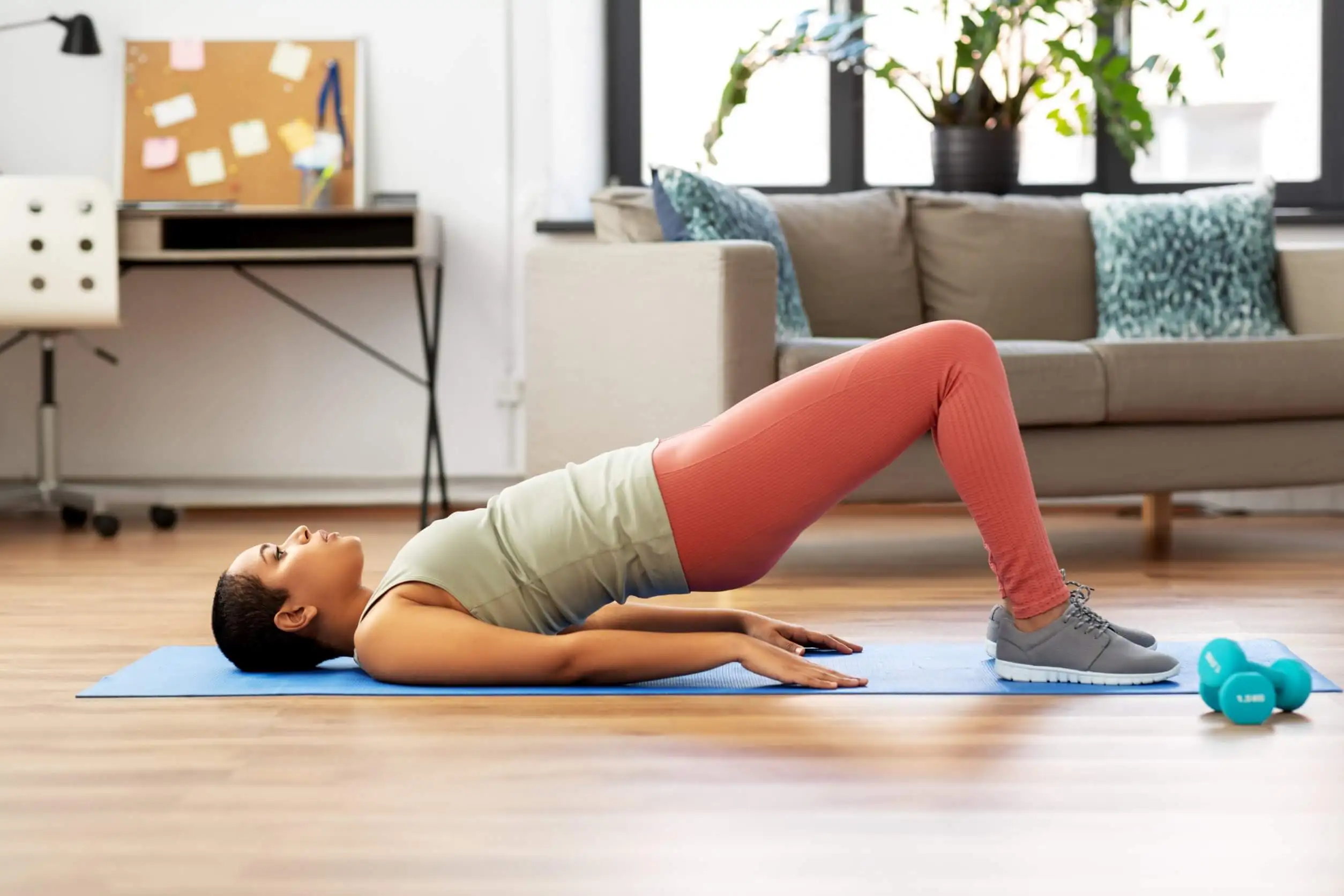Mini Workouts: Small Routines with Big Benefits


Reviewed and approved by the doctor Leonardo Biolatto
Mini workouts are the ideal choice for people who have little time available for physical exercise but don’t want to leave this aspect out of their lives. A traditional routine has a duration of 30 to 60 minutes; however, this is a large block of time that not everyone has.
If you’re one of those people who, no matter how hard they try, can’t manage to set aside this time in their schedule, then keep reading for all the details. We think you’ll definitely want to give these mini workouts a try!
Mini workouts and their benefits
Mini workouts are a modality of physical exercise that’s very popular because they adapt to the tightest schedules. They consist of dividing the traditional training session (30 to 60 minutes) into different blocks of 10 minutes throughout the day.
This method has outstanding benefits that are comparable to a traditional routine. As it is, mini workouts excel in two ways:
- Their impact on physical results.
- Their ease of implementation.
It must be said, however, that this very flexibility can cause people who are just starting out in physical activity to give up easily. After all, the same day in and day out can lead them to postpone mini sessions over and over again. So a good encouragement may be to think about the long-term health benefits, which we’ll tell you about next.

1. They have the same results as a traditional routine
Mini workouts have the same benefits on your health as a traditional routine.
This was proven by research that compiled 19 previous studies, which sought to identify the differences between cumulative exercise (mini workouts) and continuous exercise. Specifically, they wanted to differentiate the impact on blood pressure and cardiorespiratory outcomes.
The researchers found a difference in favor of cumulative exercise with respect to changes in body mass. Also, they found a decrease in bad or low-density lipoprotein (LDL) cholesterol was evident.
2. Mini workouts fit better into your daily routine
Most people assume that exercise is time-consuming. This includes the minutes to change clothes and shower at the end.
Mini workouts throughout the day may appeal to people who simply don’t have the time or inclination for a big workout. -Glenn Gaesser, professor of exercise physiology at Arizona State University
The expert adds that the sessions proposed by this methodology can be as short as a 5-minute walk or a 10-minute repetition of resistance exercises. Both don’t even require a change of attire.
We think you may also enjoy reading this article: Discover the Importance of Keeping a Day Off Your Exercise Routine
3. They help people stick to their weight loss plans
A study explains that physical activity is fundamental in the management of obesity. However, the amount of exercise required to achieve significant weight loss and its maintenance can be difficult to sustain.
A multidisciplinary approach that lowers the barriers to physical activity in this type of specific cases (such as the mini-workout proposal) could improve adherence to exercise. Consequently, this will favor weight loss.
4. Improve your mood
Research indicates that a session of brisk walking and a 10-minute meditation improves mood. This was determined by analyzing a group of young adults whose mood was monitored before and after the intervention.
Ryan Glatt, psychometrician, personal trainer, and brain health coach for the Pacific Neuroscience Institute at Providence Saint John’s Health Center, emphasizes that short training sessions throughout the day have transient benefits on the brain and mood.
5. Mini workouts lower blood pressure
Glenn Gaesser and colleagues conducted a study of 11 prehypertensive patients to identify the impact of fractional aerobic exercise on 24-hour ambulatory blood pressure.
They found that taking three walks a day (morning, noon, and evening), each lasting 10 minutes, lowered blood pressure more than one continuous 30-minute walk. The expert’s conclusion was that fractional exercise is an effective alternative for reducing cardiovascular risk in this type of patient.
Aspects to consider regarding this technique
Although the studies we have cited highlight the benefits of mini-workouts, it must be said that there is a lack of evidence regarding the number of calories that can be burned using this technique. However, experts agree that the practice of physical activity will always be beneficial when compared to a sedentary lifestyle.
Apart from the possibility of burning a certain amount of calories and guaranteeing weight loss, it should be emphasized that short exercise sessions improve physical, mental, and emotional health.

Like this article? You may also like to read: What Exercises does Jennifer Lopez Include in Her Routine to Maintain a Slim Figure?
Tips for getting started with mini workouts
Although they’re short, mini workouts still count as exercise. Therefore, for people who are just starting to practice them, it can be difficult to establish a routine. Bearing this in mind, we’re going to leave you with some recommendations to start through this modality:
- Plan ahead: Although mini workouts are flexible, it’s a good idea to plan the type of activity that you’re going to do and at what times of the day.
- Support yourself with a calendar or an alarm: So that your busy day-to-day schedule doesn’t consume the time of your mini sessions, set a reminder in your calendar, or set an alarm to help you remember them.
- Mix it up: Make sure your short workouts vary between different body parts and combine different types of exercise (cardio, strength, and endurance).
Mini workouts that you can do at any time
If you have reached this point, it’s probably because you’re interested in starting with mini workouts. If that’s the case, we have some ideas that you can put into practice at any time, even while talking on the phone or during breaks at the office:
- Use the stairs: Do 30 seconds of double steps every time you have to use the stairs.
- Train while you wait: Do 30 seconds of lunges with your own weight while waiting for your coffee to brew or every time you have to get up from your desk.
- Do squats: Spend 30 seconds doing this exercise after going from one place to another in the house or office. You can also do it while you’re in a conference or waiting to be answered on the phone.
- Sunbathe and exercise: While sunbathing in your backyard or patio, set your watch to do alternating sets of 30-second incline bench presses for 3 minutes. Do the same with a high knee exercise or walking lunges.
- Bring dumbbells to the office: While on the phone, you can work your biceps for 30 seconds. If it’s easy for you, add a sturdy chair to the routine to do tricep dips for 30 seconds. In this case, try to keep your mini-workout to 3 to 4 minutes.
As you can tell, mini-workouts are very simple routines that you can do at any time. Enjoy doing these activities and enjoy their benefits!
All cited sources were thoroughly reviewed by our team to ensure their quality, reliability, currency, and validity. The bibliography of this article was considered reliable and of academic or scientific accuracy.
- Bhammar DM, Angadi SS, Gaesser GA. Effects of fractionized and continuous exercise on 24-h ambulatory blood pressure. Med Sci Sports Exerc. 2012 Dec;44(12):2270-6. doi: 10.1249/MSS.0b013e3182663117. PMID: 22776874.
- Dalle Grave R, Calugi S, Centis E, El Ghoch M, Marchesini G. Cognitive-behavioral strategies to increase the adherence to exercise in the management of obesity. J Obes. 2011;2011:348293. doi: 10.1155/2011/348293. Epub 2010 Oct 28. PMID: 21052533; PMCID: PMC2968119.
- Edwards MK, Loprinzi PD. Experimental effects of brief, single bouts of walking and meditation on mood profile in young adults. Health Promot Perspect. 2018 Jul 7;8(3):171-178. doi: 10.15171/hpp.2018.23. PMID: 30087839; PMCID: PMC6064756.
- Murphy MH, Lahart I, Carlin A, Murtagh E. The Effects of Continuous Compared to Accumulated Exercise on Health: A Meta-Analytic Review. Sports Med. 2019 Oct;49(10):1585-1607. doi: 10.1007/s40279-019-01145-2. PMID: 31267483; PMCID: PMC6745307.
This text is provided for informational purposes only and does not replace consultation with a professional. If in doubt, consult your specialist.








